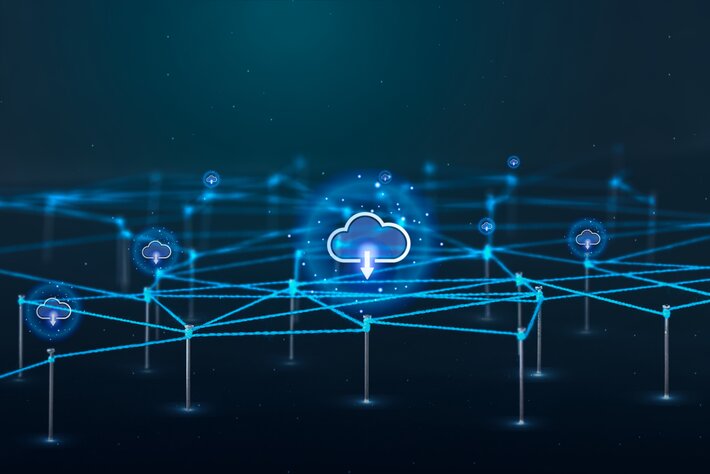The concept of the smart home or connected home – or domotics as it was called in the past – has been around for many years. Today, the smart home represents a strong opportunity for the M2M and IoT community, but also for more traditional industries working around products and services for the home. However, there is not much consensus on how the opportunity can be exploited, nor the challenges to be faced. Beecham Research’s, Saverio Romeo met with Robert Brunbäck, chief marketing officer at Telenor Connexion, to cut to the chase and find out what the future holds.
M2M Now: How does Telenor Connexion interpret the smart home sector?
RB: For a long time, the concept of smart home has been driven by the technology community. This community has explored and designed incredible ideas for home environments. However, the users of these ideas do not look at the beauty of technology and its complexity. They simply want to make the spaces in which they live more efficient, more pleasant, and easier to use. Smart home is not a technology-centric issue. Rather, it regards us and our lives in our homes. Therefore, home technologies have to be easy to use, sustainable, and cost effective.
M2M Now: What is Telenor Connexion’s offer around the smart home?
RB: Telenor Connexion comes from an M2M world. We offer global solutions for machine to machine connectivity. But, the industries we serve are increasingly looking for more integrated solutions that take into consideration connectivity, but also connectivity and device management, data analytics, and the ability of developing applications. For this reason, we have launched Cloud Connect. Cloud Connect is an integrated solution, which includes a middleware platform, cloud-based data management, and an application enablement platform.
Cloud Connect was initially designed for small and medium enterprises (SMEs), but also large corporations are adopting it. SMEs, also in the area of smart home, are adopting Cloud Connect because of the challenges with breaking into international markets. They need a global player like us able to ensure the global presence at M2M Now: What type of smart home vendors are your current customers?
M2M Now: What type of smart home vendors are your current customers?
RB: We have several projects in the area of the smart home such as: smart metering projects, security and surveillance systems, and energy data management systems. It is important to note that in some cases, our customers are companies which are traditionally focused on the home. They are trusted brands that want to expand their portfolios by adopting innovative and connected solutions for the home. Most probably, those companies are the ones that will drive the smart home market.
M2M Now: Can you share some examples?
RB: We have developed energy saving solutions for Regin for their smart buildings and for Exibea. Regin specialises in automation solutions for large buildings, but they are increasingly working around large blocks of apartments. Exibea explores and designs sustainable solutions for home, particularly in terms of energy savings. We have also successfully worked with Verisure. Verisure develops home security and surveillance solutions such as video-based alarm systems. They wanted to expand into the home through new, connected products. We are also supporting Lyse Energi AS in its smart metering in deployment project in Norway.
M2M Now: Which are the main challenges facing the growth of the smart home market?
RB: Going beyond the current technology-led approach is the main challenge in front of us. Technologists cannot develop the smart home market on their own. The smart home is about several types of products used in different conditions and in different ways by different people. And this requires collaboration between different players with different skills.
The technology-led approach has also produced a number of silo solutions for home. There are several products on the market, but these remain isolated in the home. They produce data, but the data cannot be integrated with other data. For the end users, this fragmented approach does not facilitate the adoption of smart home solutions.
There are also ethical concerns, particularly around privacy, but I believe this can be faced through technology and regulation. It is important to have secure smart home systems, but it is also important to establish rules and modes of using our data.
M2M Now: What emerging technologies – wearable devices, short-range connectivity solutions, or others – do you see impacting the smart home market in the future?
RB: Our homes are fantastic labs for a variety of technologies available today. In terms of connectivity, we will see the coexistence of short-range solutions and cellular technologies. Probably, at the moment, there are too many short-range solutions (standards and proprietary). But, ensuring interoperability can reduce the turbulence.
Applications are another important, sometimes underestimated, issue for smart homes. Software is key in improving existing applications and developing new ones. But, in order to fully exploit the creative and innovative attitude of the software development community, the industry needs to give them open APIs, and Telenor Connexion is going in that direction with the Cloud Connect platform.
M2M Now: How else is Telenor Connexion collaborating to transform our homes into smart homes?
RB: The strong push for the smart home market will not come from the M2M and IoT community, but from strong collaborations between that community and companies that have a trusted brand and a history of household products.
The second set of companies is vast because our homes have very different assets. We will see companies such as home appliance manufacturers moving towards the smart home, as well as interior designers, furniture designers, and home furniture producers. Telenor Connexion is collaborating closely with these kinds of companies because we strongly believe that cross-sector collaboration is the way forwards for the smart home sector.
M2M Now: How will Telenor Connexion contribute to the 2020 vision of the smart home?
RB: In 2020, we want to live in sustainable homes that make our moments peaceful and relaxing. We are working towards that knowing that the technologies are available. However, we cannot achieve this on our own. We want to collaborate with known brands in the home product market because we, as household owners, trust them, their products, and their histories.










